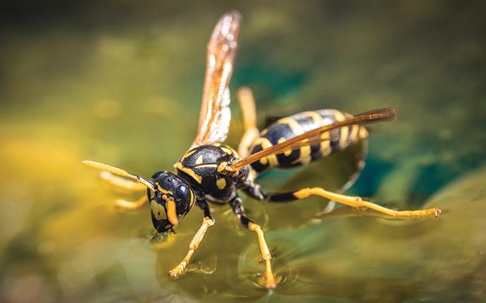At what age did you find out about wasps? Was it a parent who warned you about them, or did you find out the hard way? Either way, at some point in your childhood you found out that wasps were dangerous and that you should stay away from them or at least give them the proper space so that they don't feel threatened by your presence. If you are still trying to avoid wasps as an adult, we have some useful information you should know. Here is the most effective way to keep wasps away from your Bay Area yard.
Common Wasps Around the Bay Area
You may not know this, but there are more than one species of wasp. Yellowjackets, mud daubers, hornets, paper wasps, and cicada killers are just a few species that live here in California. Although species differ in appearance, a wasp will always have six legs, a pair of wings, two antenna, and stingers attached to their hind section.
Wasps will always fall into one of two categories. They will either be solitary insects, or they will be social. Social wasps live in large colonies and have a queen or queens that they dutifully serve. Solitary wasps, on the other hand, only fend for themselves and build nests to lay and hatch their own young.
Are Wasps Aggressive?
Not all wasps are aggressive. In fact, most species will not sting you unless directly threatened. That being said, there are a few wasps known for stinging randomly. Here in San Jose, yellow jackets are the most aggressive species of wasp. These brightly colored stingers are known for being overprotective of their nests, especially during the fall months. It is not uncommon for a yellow jacket or a group of yellow jackets to chase individuals away from where they have constructed their home, stinging as many times as they can while they do so.
Where Do Wasps Build Their Nests?
Wasps will build their nests in a variety of different locations. Some species will use chewed up wood to construct paper mache like nests up high in trees or on the sides of buildings. Other wasps will use mud to create solitary tubes on vertical surfaces. There are even a few wasp species who will build their nests underground in holes and tunnels.
How To Make Your Property Less Attractive To Yellow Jackets
Several factors attract wasps to your Bay Area property. The more you can eliminate these attractants, the less likely wasps will nest on our property or around your home.
Here are a few of the best prevention tips our experts have to offer:
- Pick up fruit that has fallen around your yard.
- Keep your landscaping well maintained and fill in holes around your property.
- Clean up thoroughly after hosting outdoor gatherings that involve food and drink.
- When eating outdoors, keep plates of food and beverages covered as much as possible.
- Consider removing flowers and other budding plants from your property.
- Keep your eye out for developing nests.
What To Do If You Find A Wasp Nest On Your Property
Wasp nests come in a variety of sizes. If you can catch a nest early and can see that it is currently empty, a broom or long pole should be enough to remove it. If you suspect wasps are inside the nest or nearby, do not try to handle it on your own. At Bay Pest, we offer quick and safe removal services for wasps and would be happy to service your property.
Reach out to our team if you need help controlling a current wasp problem or preventing one from developing in the future. We are happy to keep your yard safe from stinging insects.

